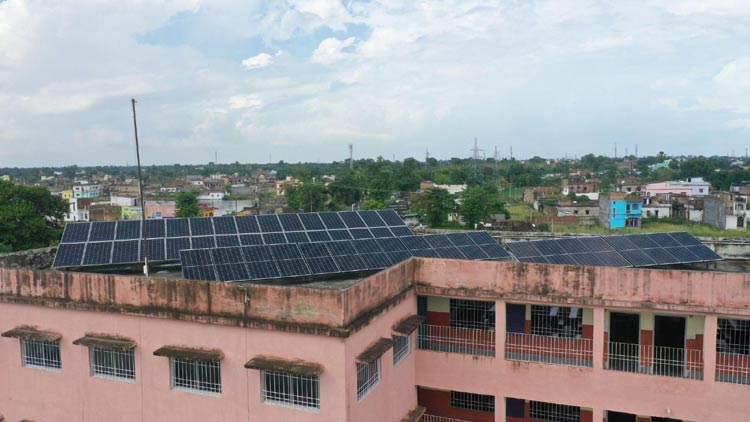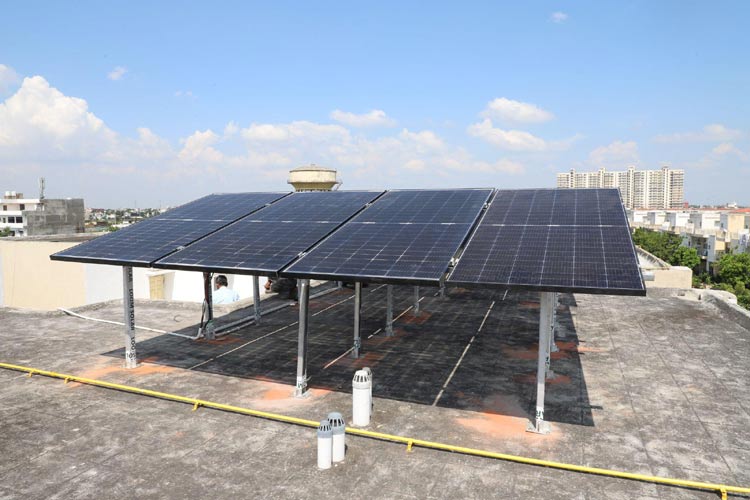
Of late, Mordor Intelligence, a market research firm stated that the market for solar energy in India is speculated to reach a CAGR of 8 percent from 2020 until the end of 2027. In fact, experts also highlighted that the COVID-19 pandemic failed to impact the market in India because a sufficient volume of growth was already viewed in the solar PV installed capacity in 2020 compared to 2019. Several factors spearheading the growth of this sector are a reduction in the price of solar technology, a greener way of generation of energy, and the flexibility of these systems. But, amid these positive vibes, there are various hurdles in the deployment of solar panels mostly due to the absence of proper policies. In this scenario, we spoke exclusively to Loom Solar’s Co-founder and Director Amol Anand who highlighted the current key challenges of the solar industry in India and how Solar is proving to be the future of India’s power sector.
Q. Solar electricity is gaining huge traction all over the country as one of the most preferred renewable sources of energy. But, its manufacturing and generation of electricity also involve various challenges. Can you please elucidate its current challenges in India and how Loom Solar is solving the problems?
In the last few years, we have seen so many changes, the temperature is increasing every year, the cost of electricity also increasing, after pandemic consumption of electricity is going up, even Co2 (Carbon emission) is increasing led by electricity production by coal. So consumers are looking for alternate options from all of these and solar energy has proven reliable, sustainable, affordable, and scalable energy among many available alternative energy sources. Since demand is high so there is a challenge on the supply and demand side also, the majority of the raw material is imported from China, after pandemic for the last 2 years cost of raw material and transportation have suffered a lot, and even now supply chain has not improved as normal so Industry is struggling to fulfill the desired demand.
Loom Solar is also part of the Industry so we are also feeling the heat of the supply chain, but we have prioritized our sourcing from Indian suppliers and we are keeping inventory for a longer period to address the temporary challenges. In terms of demand, there is a huge opportunity in India for residential, commercial, and Industrial. Every consumer wants to reduce electricity bills or wants to promote green energy so it has given an opportunity to impact the lives of millions by installing this solar energy.
Q. According to several experts, solar is still a costly source of energy and becomes problematic during monsoon as India also has a tropical climate. So, what are your views on this statement and how do you think the mindset can be changed?
If you look solar cost trend for the last 10 years, we have seen an almost 90% decline in cost but still cost is high for the ordinary consumer. We believe this cost will further down as solar energy will scale to mass customers. You are right that solar will not generate the same efficiency for twelve months but the benefit as a consumer is we can generate solar electricity and we can export it to the grid and the same unit we can take any time during the night or during monsoon season when solar is not available. To make this thing understood in the ordinary consumer's mind will take a long effort but we have seen people are becoming more aware. Therefore almost 5 GW of rooftop solar has been installed across India.

Source: Loom Solar
Q. In the last few years, the government has also unleashed various schemes and initiatives to support Solar Power. Do you think it is enough or would you like to highlight some flaws or some changes in the policies?
In India, it started with government initiatives only. In 2010, the National solar mission started to install 20 GW by the year 2022 and the government started a tendering process to install solar systems in the government building, on open land, and on roof of railway stations and gradually picked by the Public sector undertaking company and later on by the private organization. In between, the government also announced some schemes such as saubhayga yojna to light the homes of BPL customers, KUSUM yojna to run solar water pumps for irrigation, and grid-connected solar systems in urban homes to reduce electricity bills. Recently, the PLI scheme was launched to promote local manufacturing of solar systems. But there are some challenges that are not addressed by the government yet such as smooth installation of net metering, subsidy release on time, and even no support to MSME companies in the PLI scheme. The bank is not financing solar loans. No bigger initiative to educate customers about the benefits of solar energy.
Q. Currently, which are the states in India leading the solar race? What are you doing to promote it in other parts of the country?
Gujarat, Rajasthan, and Maharashtra are the leading states led by favorable policies of state government and also good climate environment to generate more electricity than other states. Since we are working at Pan India and it's a very fragmented market so reaching each home is very difficult so we are taking the help of digital brand awareness. We are creating consumer-based content and promoting among need-based consumers to reduce our customer acquisition cost. Since conversion is less due to financial issues and low awareness about solar, it seems also a good opportunity to promote to a high scale.

Source: Loom Solar
Q. What are the current business strategies of Loom Solar? What are some of the latest solar panels you are offering in the market and what are their uniqueness or differentiating aspects?
Solar is a very large market, almost USD 200 bn. So, we are not focussing on each segment rather we are working in a very niche market. Our market consists of residential homeowners who need this system from 1 KW to 100 KW and the SME segment who need from 10 KW to 100 KW system. After the pandemic, the pocket size of companies and people has reduced and so, consumers are taking more time than usual in making decisions. The bank is not offering EMI facilities in a big way to solar consumers. But these are temporary, in long run, we are hopeful that the scale of solar energy will go up. Loom Solar is known for high-efficiency modules, and latest technology products, people trust us only because of the reliability of the product and services and it has helped to create word of mouth among consumers. We are very transparent with our customers and therefore it has helped to build trust faster than others. We are offering shark panel 440 w, 535 W, and lithium batteries from 6ah to 100ah for residential homes.
Q. Do you think India has enough technology and manufacturing equipment to lead solar manufacturing? Going forward, what will be your roadmaps in the coming five years?
India has a very stable government so it has attracted a good amount of investment from outside and it's helping to set up the latest technology product in India and build manufacturing infrastructure. Currently, India has only 2 GW cell factory and 12 GW module factory, and it's estimated to increase to 50 GW in 5 years' time as large organizations such as Adani, Ambani, and Tata are doing heavy investments of almost USD 100 bn in next 10 years to build integrated solar manufacturing plant from wafer, cells, and modules. Our vision is to install rooftop solar to make each home energy efficient. So far we have installed 50,000 panels and in five years this will reach almost 5,00,000 homes. Our estimated revenue will be 1000 cr with 10,000 partners and 500 teams across India.

